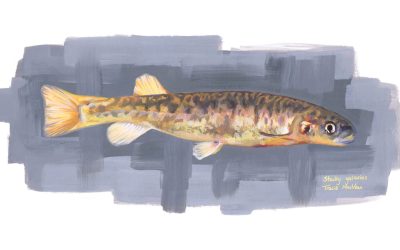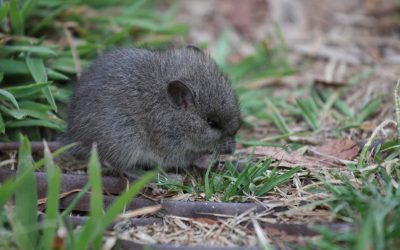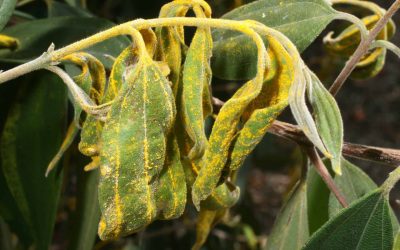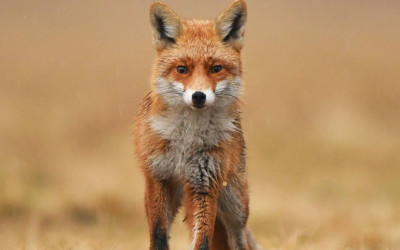MEET THE INVADERS
Horses
Feral horses, or ‘brumbies’, are heavy, muscular animals with pounding hard hooves.
Agile and alert, feral horses can detect threats from miles away. They travel in bands of around a dozen over distances of up to 20 km a day, led by a dominant stallion.
They come from Europe and Asia, where predators like wolves or even bears keep their numbers in check. Without natural predators, feral horse populations can increase by up to 20% a year. They can reproduce as early as 18 months and live for 20-30 years. They are herbivores eating predominantly grasses and shrubs.
Invasion story
The feral horse story in Australia stretches back over 2 centuries. First brought here in 1788 by British colonisers, used for the purpose of transport and early farming efforts.
It didn’t take long for them to escape their fenceless grazing areas and form feral populations on the fringes of expanding Sydney, thriving in the harsh Australian climate with no natural predators.
In 1830, ‘bush horses’ running free in the hills surrounding the city were first reported. Later, as technology advanced and machines began replacing horses, more were simply released to join the growing herds.
By the late 1800s, the escaped horses were commonly regarded as pests. Pastoralists shot them because they competed with cattle and sheep for food.
In 1890, Banjo Paterson’s rollicking poem The Man from Snowy River was published. It presented a sanitised version of pastoralists’ attitude to brumbies. It describes a fictional chase to recapture a valuable horse enticed away by brumbies and focuses on the skill of a young rider and the tenacity of his undersized but wiry stock horse. Though the only adjectives used to describe the brumbies in the poem are ‘wild’, ‘cowed’ and ‘beaten’, the poem has been re-interpreted by some as a glorification of brumbies.
Through the 20th century, feral horse populations flourished. By the 1980s aerial surveys showed they had spread into South Australia’s northern arid zone and the Kimberley, as well as into New South Wales and Victoria’s alpine and subalpine regions. This reflects their ability to thrive in almost any environment, from deserts and rocky ranges to tropical savanna grasslands and forests.
Over 200,000 were estimated in the Northern Territory and 100,000 in Queensland, mainly in the northern and western regions.
In the 1980s it was estimated 400,000 feral horses roam across all Australian states and territories, excluding Tasmania, making it the largest population of feral horses in the world.
Feral horses have become a problem in many of Australia’s premier national parks. In NSW this includes the iconic Kosciuszko National Park and world heritage-listed areas of the Blue Mountains, Barrington Tops, Guy Fawkes and Oxley Wild Rivers national parks. In Victoria, the Alpine National Park and Bharah Forest National Park are impacted. In Queensland, populations are present in Carnarvon and Fraser Island National Parks and several smaller coastal parks. In the Northern Territory, feral horses occupy parts of Kakadu National Park and World Heritage Area.
Large populations remain in the Australian Alps, Queensland, the Northern Territory and Western Australia.
How did we get here?
By the early 2000s feral horses were largely recognised as a significant pest species, especially in ecologically sensitive areas, like the Australian Alps. But cultural sentiments that romanticised these horses prevented the push for more stringent management.
In 2000, 3 professional shooters, contracted to the National Parks and Wildlife Service, shot 606 feral horses in the Guy Fawkes River National Park. The horses were stripping the park of vegetation after a long drought and a severe bushfire. Subsequent investigations confirmed that one horse had suffered a lingering death. The report recommended that shooting be retained as a management method, with some changes in procedures. A public outcry, however, resulted in the government of the day banning the aerial shooting of horses in all NSW national parks.
Across NSW, feral horse numbers began to grow rapidly.
In 2018, NSW exacerbated the problem by adopting the ridiculous Kosciuszko Wild Horse Heritage Act. Ridiculous because it was the first law to prioritise the protection of an introduced animal above the native wildlife of the national park – areas deliberately set aside for conservation purposes. This meant that horses could not be culled in the national park.
After the Guy Fawkes incident, the management of feral horses in Kosciuszko National Park was restricted. The primary control methods included passive trapping and rehoming, while aerial culling was prohibited. These non-lethal methods proved less effective in managing the growing horse population.
In 2018, the Kosciuszko Wild Horse Heritage Act was enacted, halting horse management activities for 3 years. This sparked the birth of the Reclaim Kosci campaign, founded by the Invasive Species Council, the National Parks Association of the ACT, National Parks Association of NSW, Colong Foundation for Wilderness and the Nature Conservation Council of NSW.
By 2021, a new management plan was approved. The new Kosciuszko horse management plan responded to the booming horse population by adding ground shooting to the control methods. But there was a hitch. The plan included a requirement to keep at least 3,000 feral horses in the park – a number that was not scientific but the result of the government pandering to a bitter compromise between feral horse lovers and conservationists, including the Invasive Species Council, and a number that would continue to destroy the sensitive environment.
The plan also excluded aerial culling, the only effective and most humane way to cull feral horses in Kosciuszko National Park.
The plan’s reliance on re-homing and ground shooting ignored advice from experts, such as the RSPCA and Australian Veterinary Association, that these methods would not be sufficient solutions in a park of the size and ruggedness of Kosciuszko.
By October 2023, feral horse numbers in Kosciuszko had grown to over 17,000. Shockingly, only 411 were removed in the year prior.
Evidence of environmental harm by feral horses in Kosciuszko became increasingly hard to ignore. In 2023 the predicted extinction of several horse-impacted native animal and plant species, and support for aerial shooting from a federal senate inquiry, persuaded the NSW Government to overturn the 2-decade ban on aerial shooting.
The 2021 Plan was amended and aerial control resumed, with an independent veterinary report finding that animal welfare protocols were meticulously followed. That program is currently paused because of the possibility that population levels may now be nearing the target of 3000.
In Queensland, wild horses are not legally protected and some works have been carried out in areas like the Carnarvon Ranges. 2 deaths caused by motor vehicle collisions with feral horses have occurred in Queensland.
In the Northern Territory, the horses are classified as pests but their management is underfunded and inconsistent. Western Australia, facing a different set of challenges with its arid landscapes, has implemented aerial culling programs in certain regions but has also faced resistance from interest groups.
In Victoria, shooting programs in Barmah Forest National Park and the Bogong High Plains have occurred but horse numbers are still increasing in the Eastern Alps. Some politicians want to protect horses in Victoria with ‘heritage’ legislation modeled on the NSW law.
The toll on nature
Feral horses are environmental wrecking balls in reality.
Australia’s unique environment evolved without the weight of hard-hooved animals. Our soils are already some of the oldest and most fragile in the world, with low fertility, and are very easily eroded.
The heaviest native animal in Australia is the red kangaroo, which weighs up to 90 kilograms and has soft, padded feet that tread lightly on the land⁷. In contrast, feral horses can weigh over 500 kilograms – more than 5 times heavier – with hard hooves that compact the soil and destroy native vegetation.
The pounding hooves churn up these delicate soils, causing severe erosion. They pollute precious freshwater resources that flow into our water catchments. They trample and destroy habitat, turning our unique bushlands into generic muddy paddocks. Their overgrazing of native grasses and plants strips landscapes bare. This leaves native animals without food forcing them out of their home or starvation and without clean water to breed or live in.
Feral horses trampling compacts the soil, making it difficult for native animals to burrow or find shelter affecting breeding and safety from predators. They’ve turned the headwaters of the iconic Snowy, Murray and Murrumbidgee rivers into mud baths, destroying riverbanks and vegetation.
They spread weeds, too, carrying seeds in their droppings, manes, and tails. These weeds often compete with and overtake native plants, pushing some native plants and subsequently, animals, closer to extinction.
In Australia’s drier desert areas, feral horses travel up to 50 kilometres to find food, leaving a trail of overgrazed land and drained water holes behind them. This is devastating for native species who rely on these water holes². During drought, that devastation intensifies.
The federal government’s Threatened Species Scientific Committee warns feral horses ‘may be the crucial factor that causes [the] final extinction’ for 12 alpine species unless they are removed.
Very little of Australia is safe from the impact of feral horses. They are perfectly designed to thrive in even the harshest environments – from drought-stricken regions to rugged alpine terrains.



Cultural Consequences
It’s not just our native plants and animals that are impacted. Feral horses damage sacred sites, threatening Indigenous cultural practices, traditional ecological knowledge and access to resources. The area now known as Kosciuszko National Park is the traditional home of the Walgalu people and the Ngarigo people. The park contains many sites of significance and artifacts which have been under significant threat from feral horses.
How do we fix this?
We need an urgent intervention to protect Australia’s unique native plants and animals found nowhere else on Earth.
Access to aerial shooting of feral horses again in NSW is a game-changer for protecting our environment. It set a strong example for conservation efforts across Australia to protect native animals, iconic Australian landscapes and precious water sources from the destruction of feral horses.
Because of horses’ sheer size, herding behaviours and slower rate of population growth, eradication is possible in many areas. Ensuring all states and territories have access to the full suite of control methods is vital in achieving this.
No one likes to see animals killed, but the sad reality is that we have a choice to make between urgently reducing numbers of feral horses or accepting the extinction of native plants and animals.
Our efforts, as part of our Reclaim Kosci campaign, have already helped secure the removal of feral horses from Kosciuszko National Park, through critical aerial control programs, which is now finally showing signs of recovery. As a result, across New South Wales other promising control programs are having success. This includes Barrington Tops National Park, which surrounds World Heritage Gondwana Rainforests and the Blue Mountains National Park.
In Queensland, particularly on K’gari (Fraser Island), comprehensive ground and aerial searches conducted in 2022 and 2024 have confirmed the absence of feral horses, with no sightings reported since 2019.
In Kakadu National Park in the Northern Territory, aerial culling operations have been employed to manage feral horse populations, with a notable operation in 2017 resulting in the removal of over 6,000 horses.
However, more action is needed around the Gulf of Carpentaria region, including better population surveys and engagement with Indigenous ranger groups.
In Victoria’s Alpine National Park, the government has implemented a strategic action plan aiming to reduce significantly the feral horse population to protect sensitive landscapes and unique wildlife. That plan is, however, failing to manage feral horse populations in the Eastern Victorian Alps.
Unfortunately, some still view feral horses as part of Australia’s cultural heritage and want feral horses protected or rehomed, rather than removed. But scientists, First Australians, environmental groups, political leaders and the Invasive Species Council are all on the same page – urgent, humane, and science-backed control measures are the only way to protect our native wildlife and fragile landscapes. Balancing cultural views with ecological needs is a tough challenge, but it’s one we have to face if we want to protect our native species in the most humane and effective way possible.
The Invasive Species Council continues to lead the charge to defend our iconic national parks, world heritage areas and island sanctuaries from the destruction of feral horses. We are working to secure the repeal of the Kosciuszko Wild Horse Heritage Act.

Take action to ensure our sensitive alpine areas, protected areas, islands and native animals are safe from feral horses.
FAQs
Horses were introduced to Australia in the late 18th century by European settlers. Some escaped, while others were intentionally released into the wild, leading to feral populations all over the country. Over time, these horses have multiplied, causing significant environmental damage. Horses are also regularly and deliberately abandoned by people, including in places like Kosciuszko National Park.
Feral horses trample native vegetation, degrade water sources and destroy habitats crucial for native wildlife. Their grazing also competes with native animals for resources, contributing to the decline of vulnerable species.
Yes, ‘ brumbies’ is a term used for feral horses in Australia. The term is most commonly associated with horses found in the alpine regions, such as Kosciuszko National Park, but it applies to feral horses in various parts of the country.
Some people regard brumbies as having heritage status because of their associations with pastoralism and with the role played by horses in general in World War I. And because they are mentioned in The Man from Snowy River and other literary works. The claims of heritage status are, however, contested. For instance, the federal department of Climate Change, Energy, Environment and Water has stated, ‘The Australian Government does not consider feral horses to have heritage value’.
The Invasive Species Council has been actively advocating for more effective control measures, including the use of both aerial and ground shooting. In 2023, NSW lifted the two-decade ban on aerial shooting in Kosciuszko National Park, allowing for more targeted control. This has resulted in the removal of over 7,000 feral horses by aerial and ground shooting, leading to a recovery of the park’s environment. There are also ongoing efforts to expand control programs to other national parks and regions affected by feral horses.
Feral horse culling is an effective and necessary measure to protect native species and the environment. National park staff undertake this work professionally, humanely, and safely. This was confirmed in reviews by independent animal welfare experts in 2022 and 2023.
Aerial shooting has been used across Australia for decades to manage hundreds of thousands of feral animals like horses, deer, pigs, camels and goats.
Fertility control, by a course of darts administered over time to mares, has been used successfully with feral horses in North America. The darted mares, however, have been part of relatively small populations, where each mare is known and documented, and can be approached within 30 metres. Darting has only been used in North America to prevent population growth, not to reduce populations. An Australian trial of fertility control of mares was declared unsuccessful.
Australian Government Department of Agriculture, Water and the Environment. (n.d.). Andropogon gayanus (gamba grass). Retrieved from https://profiles.ala.org.au/opus/weeds-australia/profile/Andropogon%20gayanus
Northern Territory Government. (2022). Protecting people and the environment: Containing and eradicating dangerous gamba grass infestations in the Northern Territory.
Setterfield, S. A., Rossiter-Rachor, N. A., & Adams, V. M. (2018). Navigating the fiery debate: The role of scientific evidence in eliciting policy and management responses for contentious plants in northern Australia. Retireved from https://doi.org/10.1071/PC18028
Williams, G. & McLellan, L. (2022). The ecological consequences of invasive grasses on fire regimes in Australia. Journal of Environmental Management. Available at: https://doi.org/10.1016/j.jenvman.2022.116785
Invasive Species Council. (2008). Queensland bans gamba grass: Feral Herald, Volume 1, Issue 18.
Australian Government Department of Climate Change, Energy, the Environment and Water. (2023). Northern Australia Introduced Grasses. Retrieved from https://www.dcceew.gov.au/sites/default/files/env/pages/99dfad7e-9feb-4da1-826b-fdf5740ffa5e/files/northern-australia-introduced-grasses.pdf
Country Needs People. (2023). Gamba grass: A massive threat to biodiversity, safety and culture. Retrieved from https://www.countryneedspeople.org.au/gamba_grass_massive_threat_to_biodiversity_safety_and_culture
Rossiter, N. A., et al. (2003). Gamba grass and fire intensity in northern Australia. Pacific Conservation Biology, 24(3), 318-328. https://doi.org/10.1046/j.1472-4642.2003.00020.x
Setterfield, S. A., et al. (2010). Impact of gamba grass on fire regimes and biodiversity in northern Australia. Pacific Conservation Biology, 24(3), 318-328. https://doi.org/10.1111/j.1472-4642.2010.00688.x
Chaseling, O. (2023, February 26). Report recommends urgent expansion of gamba grass eradication zone as Litchfield National Park faces growing threat. ABC News. https://www.abc.net.au/news/2023-
Department of Environment, Parks and Water Security. (2021, November). Cycas armstrongii. Northern Territory Government. https://nt.gov.au/__data/assets/pdf_file/0017/208430/cycas-armstrongii.pdf
Northern Territory Department of Environment, Parks and Water Security. (2021). Cycas armstrongii.
Department of Climate Change, Energy, the Environment and Water (DCCEEW) 2021, Threat abatement plan to reduce the impacts on northern Australia’s biodiversity by the five listed grasses: Review 2012–2021, Australian Government, Canberra, viewed 15 April 2025, https://www.dcceew.gov.au/sites/default/files/documents/tap-reduce-impacts-northern-australias-biodiversity-five-listed-grasses-review-2012-2021.pdf.
Lonsdale, WM 2004, ‘Predicting the spread of invasive species: the influence of environmental resistance, propagule pressure and the Allee effect’, in B Sindel & S Johnson (eds), Proceedings of the 14th Australian Weeds Conference, Wagga Wagga, NSW, 6–9 September 2004, Weed Society of New South Wales, Sydney, pp. 168–171, viewed 15 April 2025, https://caws.org.nz/old-site/awc/2004/awc200411681.pdf.
Department of Climate Change, Energy, the Environment and Water (DCCEEW) 2021, Threat abatement plan to reduce the impacts on northern Australia’s biodiversity by the five listed grasses: Review 2012–2021, Australian Government, Canberra, viewed 15 April 2025, https://www.dcceew.gov.au/sites/default/files/documents/tap-reduce-impacts-northern-australias-biodiversity-five-listed-grasses-review-2012-2021.pdf.
Australian Government Department of Agriculture, Water and the Environment. (n.d.). Andropogon gayanus (gamba grass). Retrieved from https://profiles.ala.org.au/opus/weeds-australia/profile/Andropogon%20gayanus
Northern Territory Government. (2022). Protecting people and the environment: Containing and eradicating dangerous gamba grass infestations in the Northern Territory.
Setterfield, S. A., Rossiter-Rachor, N. A., & Adams, V. M. (2018). Navigating the fiery debate: The role of scientific evidence in eliciting policy and management responses for contentious plants in northern Australia. Retireved from https://doi.org/10.1071/PC18028
Williams, G. & McLellan, L. (2022). The ecological consequences of invasive grasses on fire regimes in Australia. Journal of Environmental Management. Available at: https://doi.org/10.1016/j.jenvman.2022.116785
Invasive Species Council. (2008). Queensland bans gamba grass: Feral Herald, Volume 1, Issue 18.
Australian Government Department of Climate Change, Energy, the Environment and Water. (2023). Northern Australia Introduced Grasses. Retrieved from https://www.dcceew.gov.au/sites/default/files/env/pages/99dfad7e-9feb-4da1-826b-fdf5740ffa5e/files/northern-australia-introduced-grasses.pdf
Country Needs People. (2023). Gamba grass: A massive threat to biodiversity, safety and culture. Retrieved from https://www.countryneedspeople.org.au/gamba_grass_massive_threat_to_biodiversity_safety_and_culture
Rossiter, N. A., et al. (2003). Gamba grass and fire intensity in northern Australia. Pacific Conservation Biology, 24(3), 318-328. https://doi.org/10.1046/j.1472-4642.2003.00020.x
Setterfield, S. A., et al. (2010). Impact of gamba grass on fire regimes and biodiversity in northern Australia. Pacific Conservation Biology, 24(3), 318-328. https://doi.org/10.1111/j.1472-4642.2010.00688.x
Chaseling, O. (2023, February 26). Report recommends urgent expansion of gamba grass eradication zone as Litchfield National Park faces growing threat. ABC News. https://www.abc.net.au/news/2023-
Department of Environment, Parks and Water Security. (2021, November). Cycas armstrongii. Northern Territory Government. https://nt.gov.au/__data/assets/pdf_file/0017/208430/cycas-armstrongii.pdf
Northern Territory Department of Environment, Parks and Water Security. (2021). Cycas armstrongii.
Department of Climate Change, Energy, the Environment and Water (DCCEEW) 2021, Threat abatement plan to reduce the impacts on northern Australia’s biodiversity by the five listed grasses: Review 2012–2021, Australian Government, Canberra, viewed 15 April 2025, https://www.dcceew.gov.au/sites/default/files/documents/tap-reduce-impacts-northern-australias-biodiversity-five-listed-grasses-review-2012-2021.pdf.
Lonsdale, WM 2004, ‘Predicting the spread of invasive species: the influence of environmental resistance, propagule pressure and the Allee effect’, in B Sindel & S Johnson (eds), Proceedings of the 14th Australian Weeds Conference, Wagga Wagga, NSW, 6–9 September 2004, Weed Society of New South Wales, Sydney, pp. 168–171, viewed 15 April 2025, https://caws.org.nz/old-site/awc/2004/awc200411681.pdf.
Department of Climate Change, Energy, the Environment and Water (DCCEEW) 2021, Threat abatement plan to reduce the impacts on northern Australia’s biodiversity by the five listed grasses: Review 2012–2021, Australian Government, Canberra, viewed 15 April 2025, https://www.dcceew.gov.au/sites/default/files/documents/tap-reduce-impacts-northern-australias-biodiversity-five-listed-grasses-review-2012-2021.pdf.








